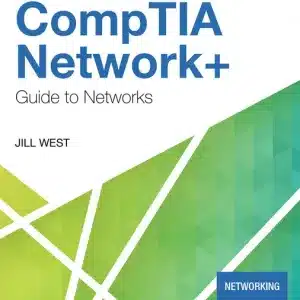Original price was: $79.99.$34.99Current price is: $34.99.
Test bank & Solution manual for Hole’s Essentials of Human Anatomy & Physiology 15th Edition By Charles Welsh
Product ID: 0923
For Contact: bookzon.shop@gmail.com
Description
Test Bank & Solution Manual for Hole’s Essentials of Human Anatomy & Physiology, 15th Edition
By Charles Welsh
Book Overview
Hole’s Essentials of Human Anatomy & Physiology, 15th Edition by Charles Welsh is specifically designed for one-semester anatomy and physiology courses. This textbook assumes no prior science knowledge, making it ideal for students who are beginning their studies in the health sciences. The 15th Edition effectively supports core anatomical and physiological topics with clinical applications, allowing students to relate difficult concepts to real-world healthcare settings.
The book integrates the Learn, Practice, and Assess system, which is used throughout both the textbook and digital content. This system ensures students can immediately apply what they learn in each chapter, helping them achieve mastery of the material. The system includes:
-
Learn: Learning outcomes at the beginning of each chapter set the stage for the content.
-
Practice: Questions at the end of each section help students reinforce the material.
-
Assess: End-of-chapter resources allow students to test their knowledge and ensure they have a solid understanding of the content.
With this structured approach, the book is designed to provide students with a strong foundation in human anatomy and physiology, making it an invaluable resource for those pursuing careers in the allied health field.
Key Features of the 15th Edition
1. Comprehensive Coverage for Allied Health Students
This textbook is tailored for allied health students, covering essential concepts in anatomy and physiology while making complex topics accessible and relevant to real-life healthcare situations.
2. Learn, Practice, and Assess System
The Learn, Practice, and Assess system helps students achieve mastery of the material. Each chapter is structured to help students learn new content, practice key concepts, and assess their understanding.
-
Learning outcomes guide students on what they will learn.
-
Practice questions reinforce information to aid in retention.
-
Assessments confirm student comprehension and application of the material.
3. Clear and Concise Writing
The 15th Edition continues Charles Welsh’s tradition of clear, student-friendly writing. The text is designed for ease of understanding, even for those with no prior science background.
4. Clinical Applications
The textbook integrates clinical examples throughout, making the material directly applicable to students preparing for careers in healthcare. These real-world examples help bridge the gap between theory and practice.
5. Updated Digital Content
In addition to the textbook, students have access to digital content that includes interactive tools, practice exercises, and immediate feedback to enhance their learning experience.
Table of Contents
UNIT 1 – LEVELS OF ORGANIZATION
-
Chapter 1: Introduction to Human Anatomy and Physiology
Introduces students to the field of human anatomy and physiology, providing a basic understanding of the body’s organization and function. -
Chapter 2: Chemical Basis of Life
Covers the fundamental chemistry of life, including atoms, molecules, and chemical reactions essential for cellular function. -
Chapter 3: Cells
Describes the structure and function of cells, the building blocks of the body, and their role in maintaining homeostasis. -
Chapter 4: Cellular Metabolism
Explores the biochemical processes within cells, including energy production and the role of metabolism in sustaining life. -
Chapter 5: Tissues
Introduces the four basic types of tissues in the human body: epithelial, connective, muscle, and nervous tissue.
UNIT 2 – SUPPORT AND MOVEMENT
-
Chapter 6: Integumentary System
Covers the skin, hair, and nails, highlighting their protective, sensory, and regulatory functions. -
Chapter 7: Skeletal System
Explains the structure and function of bones and the skeletal system, including the role of bones in movement and protection. -
Chapter 8: Muscular System
Discusses the structure and function of muscle tissue and how muscles facilitate body movement.
UNIT 3 – INTEGRATION AND COORDINATION
-
Chapter 9: Nervous System
Explains the structure and function of the nervous system, including the brain, spinal cord, and nerves, and how they coordinate body functions. -
Chapter 10: The Senses
Covers the major sensory systems, including sight, hearing, taste, smell, and touch, and how they help the body interact with the environment. -
Chapter 11: Endocrine System
Focuses on the glands and hormones that regulate metabolism, growth, and other vital functions in the body.
UNIT 4 – TRANSPORT
-
Chapter 12: Blood
Explains the components and functions of blood, including its role in transport, immunity, and regulation. -
Chapter 13: Cardiovascular System
Describes the heart and blood vessels, exploring how the cardiovascular system circulates blood throughout the body. -
Chapter 14: Lymphatic System and Immunity
Covers the lymphatic system and the body’s immune defenses against pathogens.
UNIT 5 – ABSORPTION AND EXCRETION
-
Chapter 15: Digestive System and Nutrition
Explains how the digestive system processes food and absorbs nutrients to sustain the body’s functions. -
Chapter 16: Respiratory System
Covers the structure and function of the respiratory system, focusing on how the body exchanges gases with the environment. -
Chapter 17: Urinary System
Describes how the kidneys and other parts of the urinary system maintain fluid and electrolyte balance while removing waste. -
Chapter 18: Water, Electrolyte, and Acid-Base Balance
Explains the body’s mechanisms for maintaining homeostasis with respect to water, electrolytes, and acid-base balance.
UNIT 6 – THE HUMAN LIFE CYCLE
-
Chapter 19: Reproductive Systems
Describes the structure and function of the male and female reproductive systems and how they contribute to reproduction. -
Chapter 20: Pregnancy, Growth, Development, and Genetics
Covers the stages of human development, from fertilization through pregnancy and beyond, with a focus on genetics and inherited traits.
For more test banks and manual solutions, click here.






Highly recommended
Clarifies concepts
Example-backed
Suitable for all levels
Enhances understanding